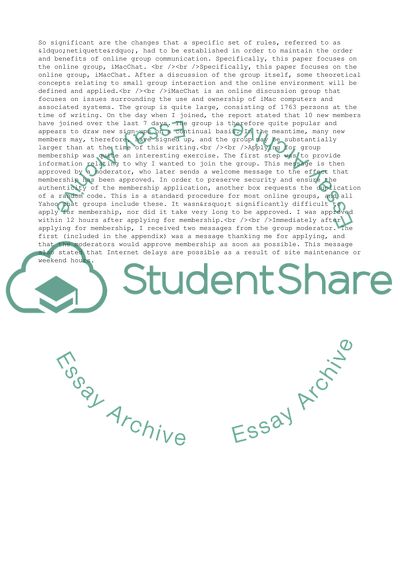Cite this document
(Small Group Communication: iMacChat Case Study Example | Topics and Well Written Essays - 3000 words, n.d.)
Small Group Communication: iMacChat Case Study Example | Topics and Well Written Essays - 3000 words. https://studentshare.org/business/1718049-electronic-group-analysis
Small Group Communication: iMacChat Case Study Example | Topics and Well Written Essays - 3000 words. https://studentshare.org/business/1718049-electronic-group-analysis
(Small Group Communication: IMacChat Case Study Example | Topics and Well Written Essays - 3000 Words)
Small Group Communication: IMacChat Case Study Example | Topics and Well Written Essays - 3000 Words. https://studentshare.org/business/1718049-electronic-group-analysis.
Small Group Communication: IMacChat Case Study Example | Topics and Well Written Essays - 3000 Words. https://studentshare.org/business/1718049-electronic-group-analysis.
“Small Group Communication: IMacChat Case Study Example | Topics and Well Written Essays - 3000 Words”. https://studentshare.org/business/1718049-electronic-group-analysis.


